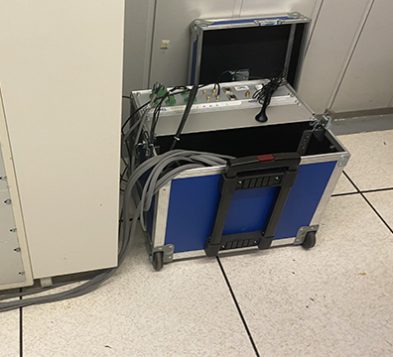Locating faults on electrical lines
SDEL Contrôle Commande has developed an innovative solution that allows the precise detection and location of faults on electrical lines, thanks to two Geo Default Systems (GDS) sensors and automatic incident analysis software known as FACES.
SDEL Contrôle Commande recently installed a cutting-edge solution for detecting and locating faults on electrical lines. This novel technology monitors the 225 kV line between the substations in Sierentz and Argiesans in northeastern France.

The solution is based on two Geo Default Systems (GDS) installed at either end of the line, along with the FACES software, which automatically analyses incidents. The two GDS synchronously measure currents and voltages on the line, allowing sophisticated algorithms included in FACES to the exact location of faults. This solution is based on the propagation of electrical waves along the line under inspection and on impedance measurements.
It has multiple advantages for the customer: the GDS detect permanent and momentary faults on the line, such as lightning strikes, or arcing caused by birds or trees, rapidly and with high precision. The FACES software automatically processes the data relating to a given incident in just a few seconds. In addition to its excellent performance, this solution is easily transferable from one site to another and is simple to install.
The inspiration for developing this solution came from a product that uses propagated sound waves to locate faults in cable-stayed suspension bridges. Teams from SDEL Contrôle Commande and Gustave Eiffel University adapted this principle to electrical transmission networks, allowing precise location (almost to the metre) of faults, not to mention faster response times.

